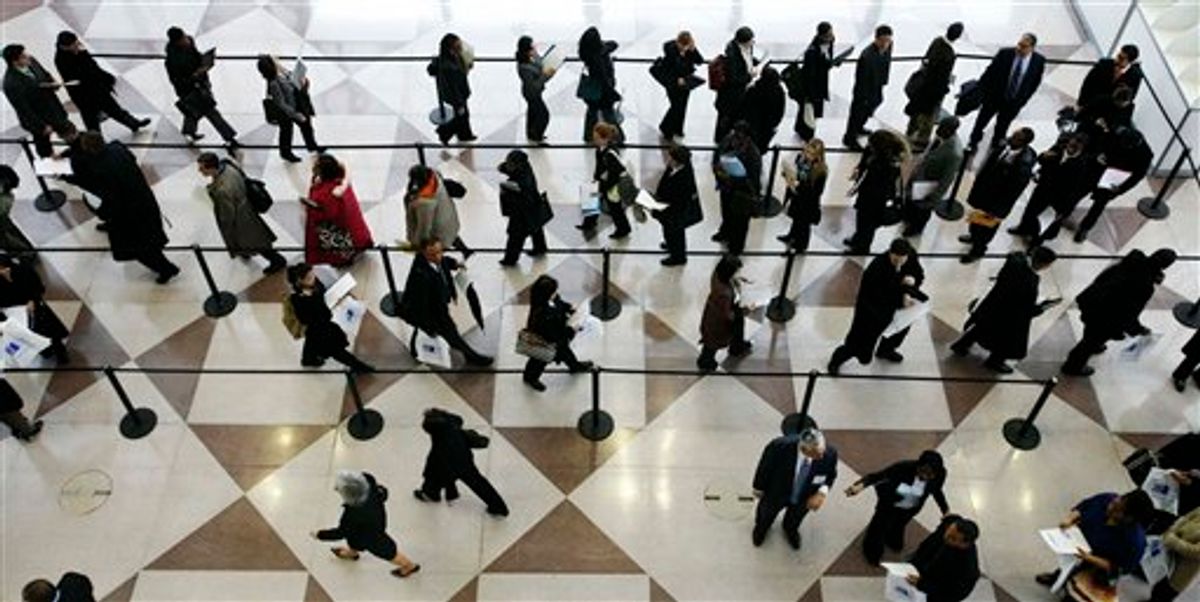The U.S. economy added 151,000 jobs in October. All things considered, that's a pretty good number -- one of the best showings in 2010 if we exclude the spring totals pumped up by Census hires. Also encouraging: the number almost entirely reflects private sector gains. Government payrolls fell by 8000. The unemployment rate remained at 9.6 percent.
Temp job employment grew and the average work week inched up -- both signs, supposedly, that employers are feeling some pressure to hire workers full-time.
But if you step away from the top-line number, the basic parameters of the U.S. labor situation are still impressively grim.
- The number of long-term unemployed (those jobless for 27 weeks and over) was about unchanged over the month at 6.2 million. In October, 41.8 percent of unemployed persons had been jobless for 27 weeks or more.
- About 2.6 million persons were marginally attached to the labor force in October, up from 2.4 million a year earlier. Marginally employed workers want jobs, but haven't looked for them in the last four weeks.
- Among the marginally attached, there were 1.2 million discouraged workers in October, an increase of 411,000 from a year earlier. Discouraged workers are persons not currently looking for work because they believe no jobs are available for them.
Millions of Americans have been without work for more than six months. Millions more want work but haven't looked for a job in the last month or have given up looking entirely. The U-6 number, which measures the "total unemployed, plus all persons marginally attached to the labor force, plus total employed part time for economic reasons" still hovers at a criminally high 17.0 percent, down from 17.1 percent in September.
If the top line number is the beginning of a sustained upward trend, then the October labor report is good news indeed. But while the stock market is likely to surge again, bolstered by the news and juiced by Fed stimulus, there's no escaping the larger context: It's very, very bleak out there, and signs of improvement are grudging.



Shares